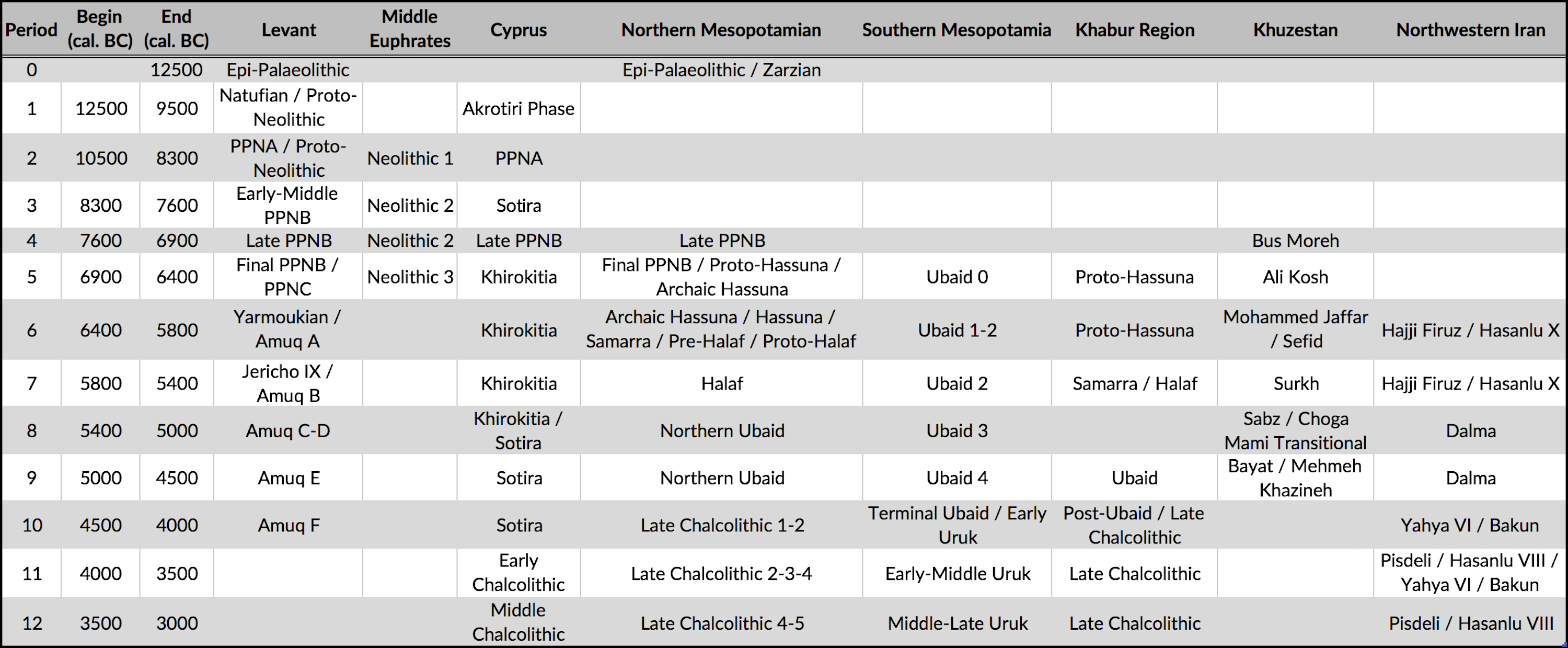DObsiSS
The Database of Obsidian Sourcing Studies
View the Project on GitHub zackbatist/DObsiSS
Contact Info
This project is maintained by Zack Batist
Twitter: @mtl_zack
Github: zackbatist
Homepage: zackbatist.github.io

DObsiSS is licensed under a Creative Commons Attribution-ShareAlike 4.0 International License
Hosted on GitHub Pages — Theme by orderedlist
Overview
The Database of Obsidian Sourcing Studies is a listing of chemically characterized archaeological obsidian, compiled from published journal articles, excavation reports, conference papers and other scholarly records. The database lists the amount of obsidian artefacts uncovered at sites in southwest Asia and Anatolia made from material derived from various volcanic sources based on geochemical analysis and comparison with geological samples.
Bringing all of the data together, archaeologists can reconstruct patterns of human movement and interaction on broad geographic and temporal scales. Hopefully this dataset may be put to other good uses as well. DObsiSS is expandable and new sourcing data will be added as it is generated; if anyone has any suggestions or modifications that they would like to propose, feel free to commit changes, fork the repository or contact me with any questions or concerns.
The Repository
The database consists of multiple files that are organized in a purposeful way. CSV files hold tabular data and can be used for various statistical or relational analyses, among other functions. geoJSON files specify geographical elements of the dataset, and are easily imported into various GIS platforms. This file format is a variant of JSON, and is thus also very well suited for web-based visualizations. The JSON-LD file is used to integrate the dataset within a wider network of related information. Using the Linked Open Data protocol, data fields are associated with explicitly defined schemas that are presented here or elsewhere on the web. Bibliographic data pertaining to the original publications from which obsidian sourcing data are derived are available in bibtex format, and a listing of geochemical groups and their associated volcanic sources are available as well.
This database is being actively maintained and new information is incorporated as it becomes available. However, obsidian sourcing data that are pending publication are omitted until they are made publicly accessible. Feel free to ping me or commit any changes if you would like to include new data that has not yet been added, or if you would like to propose any modifications. See my simple introduction to git or my poster from the 2015 AIA Annual Meeting for an overview of the platform upon which DObsiSS operates.
Obsidian Sources
The obsidian sources listed in the database are defined according to the determinations drawn up by Poidevin (1998).1 Their locations are listed in a geoJSON file that is included in the repository and mapped below.
While the present dataset only includes obsidian from southwest Asia and Anatolia, plenty of sourcing data has been generated pertaining to other regions as well. Due to the large amount of effort required for the compilation of this information, DObsiSS will remain focused on the area currently covered.
Chronology
The chronological structure adopted here conforms to the widely used periodization employed in the Atlas des Sites du Proche-Orient (Aurenche et al. 2001; Hours et al. 1994)2,3. See the following table for comparisons with regional chronological frameworks.

Click here for larger image
-
Poidevin, J.-L. 1998. Les gisements d'obsidienne de Turquie et de Transcaucasie: géologie, géochemie et chronométrie. In L'obsidienne au Proche et Moyen Orient: Du volcan à l'outil, M.-C. Cauvin, A. Gourgard, B. Gratuze, N. Arnaud, G. Poupeau, J.-L. Poidevin and C. Chataigner (eds.), BAR International Series 738, pp. 106-156. Oxford: Archaeopress. ↩
-
Aurenche, O., P. Galet, E. Régagnon-Caroline & J. Évin. 2001. Proto-Neolithic and Neolithic Cultures in the Middle East - The Birth of Agriculture, Livestock Raising, and Ceramics: A Calibrated C14 Chronology 12,500-5500 cal BC. Radiocarbon 43(3):1191-1202. ↩
-
Hours, F., O. Aurenche, J. Cauvin, M.-C. Cauvin, L. Copeland & P. Sanlaville. 1994. Atlas des Sites du Proche Orient (14000-5700 BP). Lyon: Maison de l'Orient Méditerranéan. ↩